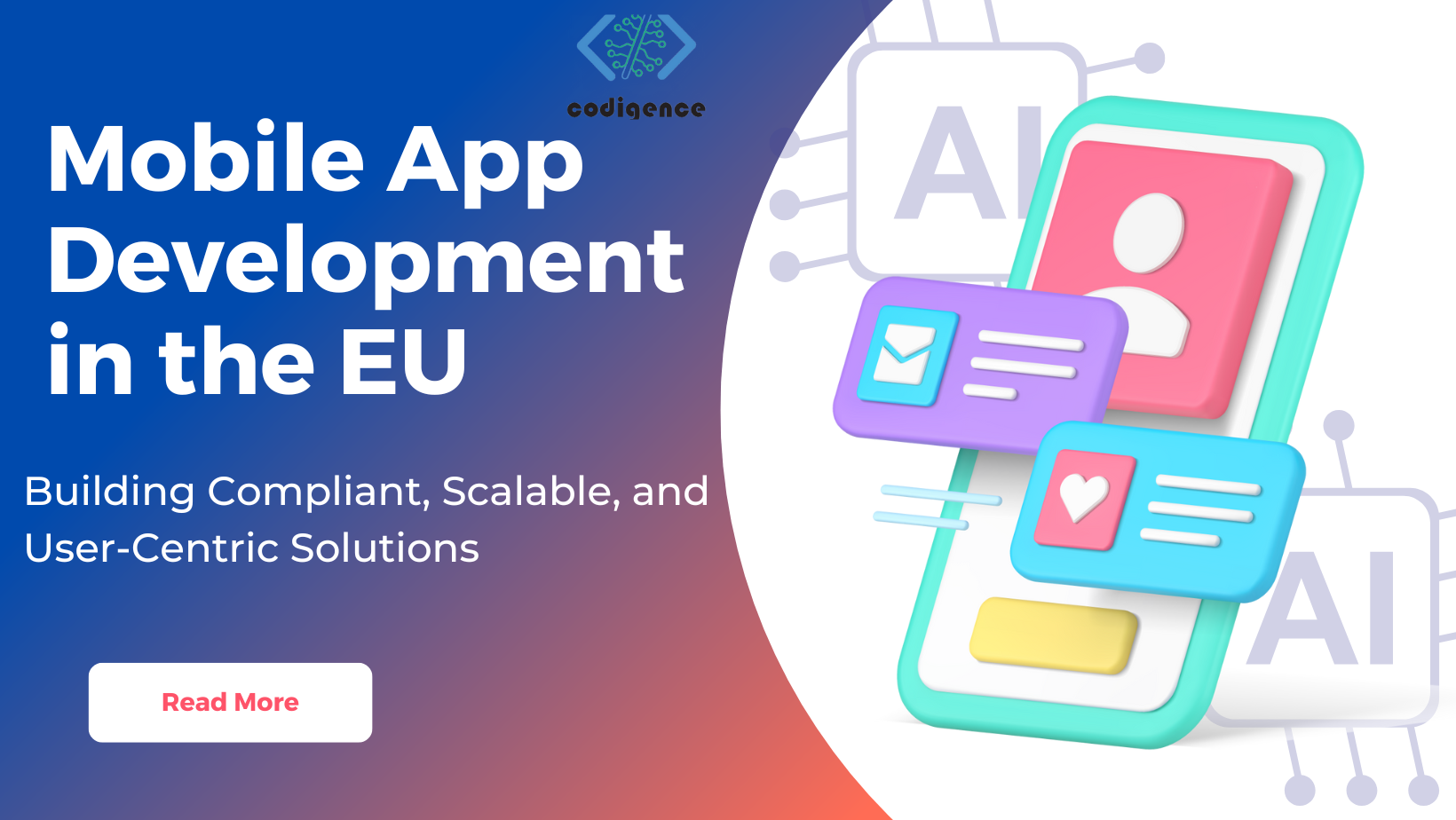Mobile App Development in the EU
04 Jul 25 | Mobile App Development In EU,
Understanding the EU Market and User Intent
User intent refers to the goal a user wants to achieve when using a mobile app. In the EU, expectations are high due to:
- Strict data privacy laws (like GDPR)
- High digital literacy
- Data transparency and usability demands
- Multiple languages and cultures
Meeting this intent is critical for both retention and monetization.
Key Considerations for Mobile App Development in the EU
1. GDPR Compliance
- User consent before data collection
- Clear privacy policies
- Right to access, correct, and delete data
- Secure storage and transfer
Pro Tip: Collaborate with EU-based developers who understand GDPR intricacies.
2. Localization and Multilingual Support
- Translate UI and messages
- Adapt visuals and UX per culture
- Localize legal disclaimers
3. Cross-Platform Development
Use frameworks like Flutter or React Native for wider reach.
- Faster time to market
- Lower cost
- Consistent UI/UX
4. Data Security and Hosting Within the EU
- Use EU-based cloud providers (e.g., OVHcloud, Hetzner)
- Encrypt sensitive data
- Perform security audits
Best Practices for EU-Focused App Development
1. Mobile-First Design
- Intuitive navigation
- Touch-optimized UI
- Responsive layouts
2. App Store Optimization (ASO)
- Localized titles and descriptions
- Targeted keywords
- Multilingual screenshots and videos
- Engage with local reviews
3. Progressive Web Apps (PWAs)
PWAs are ideal for SMEs and content apps, offering:
- Offline access
- No app store approvals
- Instant updates
- GDPR-friendly setup
Industries Driving Mobile App Development in the EU
- eCommerce: Zalando, ASOS, Carrefour
- Healthcare: Doctolib, Ada Health
- Fintech: Revolut, N26
- Travel: Omio, FlixBus, Trainline
Future Trends in EU App Development
- AI Integration: Smarter chatbots and personalization
- 5G: Enables real-time AR/VR experiences
- Sustainability: Green coding practices for energy efficiency
